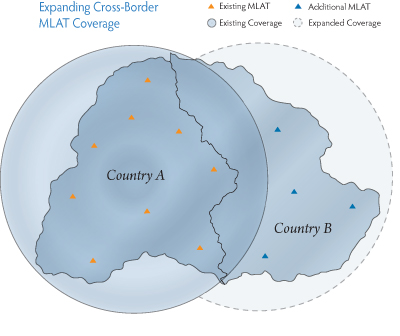| Multilateration systems have been planned and installed by ANSPs to provide optimum coverage within the borders of their own nations. As occurred often with SSR, surveillance coverage often extends to “spill over” into a neighboring state’s airspace. However, unlike traditional radar, multilateration’s unique expansion capability offers the capability of extending the existing investment of one ANSP and enabling cost-sharing and cooperation models never before possible. As multilateration systems are progressively adopted worldwide, air traffic management planners in adjacent states can achieve significant economic benefits by jointly assessing their respective national needs in order to optimize their future multilateration configurations. This not only brings cost savings, but can also produce seamless aircraft monitoring across their common borders.
Extending MLAT enables cost-sharing and cooperation not possible with traditional radar. | | 
|
|

